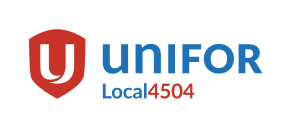CCOHS produces free monthly podcasts designed to keep you current with information, tips and insights into the health, safety and well-being of working Canadians. CCOHS calls it "Health and Safety To Go" because you can download and listen to the podcasts at your own convenience.
One of interest is the "Staying Safe When Working Alone" podcast. Although some of the situations may be different, the circumstance of working alone is the same. They provide some great tips and advice.
A sample Check In Procedure may be useful as well for those who are working alone.
- Establish a main contact person for the lone worker.
- Decide if a verbal check-in is adequate, or if the employee must be accounted for by a visual check.
- Ensure the employee Check In Procedure is appropriate for both regular business hours as well as after main office hours.
For most lone workers, the telephone will be the main source of contact. If the employee works at a desk or station, a telephone close by is required. If the employee is away from a main office or work station, the use of a cell phone is important. If a cell phone is unreliable in the employee area, ensure alternative methods of communication are available (such as use of public telephones, site visits or satellite technology).
When travelling out of the office, the main contact person should know the following details of the lone employee:
- Destination.
- Estimated time of arrival.
- Return time or date.
- Contact information.
- Mode of travel (public transit, car, plane, etc.).
- Alternate plans in the event of bad weather, traffic problems, etc.
The lone employee should:
- Prepare a daily work plan so it is known where you will be and when.
- Identify one main person to be the contact at the office, plus a backup.
- Define under what circumstances you will check in and how often.
- Stick to the visual check or call-in schedule; you may wish to have a written log of contact.
- Have the contact person call or visit you periodically to make sure you are okay.
- Pick out a code word to be used to identify or confirm that help is needed.
- Develop an emergency action plan to be followed if you do not check-in when you are supposed to.
Safe work practices when working after hours:
- Vehicles must be parked in a common area (example: front of building).
- Before exiting your vehicle, perform a visual check of the parking lot to ensure that it is safe.
- Hold your keys as to be ready to defend yourself if needed.
- Upon leaving the vehicle to enter the building, ensure that all doors are locked.
- Enter the building through the main door and complete the required security process or the building.
- Have a list of emergency numbers close to the phone and include in the list the building’s civic address.
- Ensure all doors are locked behind you.
- Ensure that office lights are on while you are at work. This includes corridors, bathrooms and stairwells.
- Call a friend or family member when you arrive and just before you leave. Indicate how long you will be at work, and when you expect to leave.
- Before you leave, remember to shut down any equipment used.
- If it is dark when you leave, conduct a visual check of the parking lot before going to your vehicle.
- Ensure your keys are easily accessible for your vehicle as you leave the building.
- Do not enter any confined or closed areas unless required.
- Ensure you are familiar with all exits and emergency procedures.
- Do not leave any valuables in the open.
- Always check your work area for obvious hazards.
- Avoid anyone who is unfamiliar, and call for assistance.

